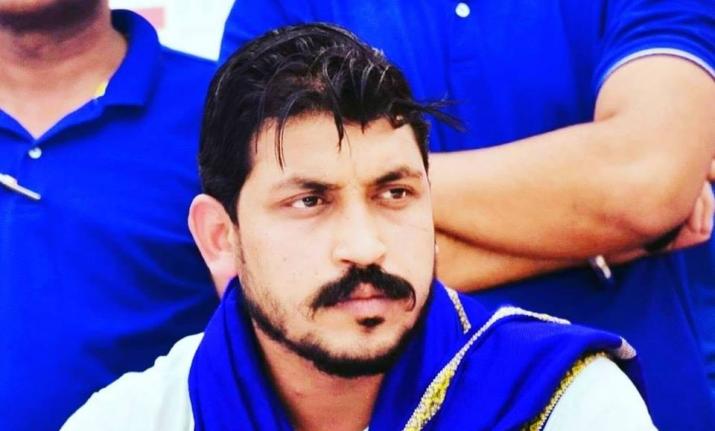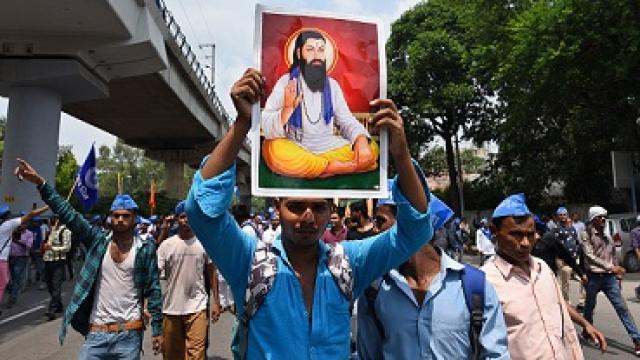In a latest development from the Capital city of Delhi, the Delhi Development Authority has cleared a plot for the construction of a temple dedicated to Indian Saint Ravidas. It is in this context that the DDA has gone ahead with the approval of a 400 square metres plot in the Jahapanah city forest area in Tughlaqabad. The DDA has also underlined that this region shall no longer be used for recreational purposes alone but should be seen as a public/semi-public space that is being used for religious purposes. It is a landmark moment for the Dalit community in India, because Saint Ravidas was a Dalit icon and is revered by a great number of people within the community.
The construction approval of a temple solely dedicated to Saint Ravidas alone holds significance because it was on August 10,2019 that the DDA, in following an order from the Supreme Court of India, demolished the Saint Ravidas temple. After the demolition of the temple, Dalit activists and scholars took to the streets in protest and took this as an onslaught on not only their right to free worship but also as an insult to their faith and icon.
Hundreds of protestors took to the streets of Delhi on August 21. And Chandrahsekhar Azad, the Chief of the Bhim Army and over 5o other activists were arrested during the political mobilisation that took place in the Capital against the demolition of the Saint Ravidas temple by the DDA in Delhi.
It is in this context that we also have to note that the DDA had to fight a legal battle with the management of the temple in relation to the possession of the land on which the temple had been constructed. The Delhi High Court gave its ruling in favour of the DDA while the Supreme Court stuck to its mandate of having the temple demolished.
It was in October,2019 that the Supreme Court of India made a decision in favour of the Dalit community which had been anguished by the demolition of the temple, when it asked the Centre to start the work of allotting an alternative site in the same spot for the reconstruction of the temple. The idea was to facilitate the rebuilding of the Saint Ravidas temple.
This is indeed a landmark moment for the Dalit community all across India because an attempt is being made by the Centre and the state government to reconstruct the temple and win back the anguished Dalits in the country, who had been up in arms when the work towards the demolition of the Ravidas Temple was going on last year.
It wouldn’t be wrong to say that a large number of Dalit people not only in Delhi but in places like Punjab and Haryana protested the demolition orders for their revered religious site, the Ravidas temple in Delhi.

The Ravidas Temple in Delhi has been seen as a site of spiritual and religious importance by the Dalit community as it reminds them of the tremendous contributions and teachings of Saint Ravidas, who was a 15th century leader of the community.
The temple which had been demolished by the DDA was located in the protected forest area and brought a 27 year old legal battle to a closure when it was finally brought down on the orders of the Supreme Court. The point of conflict between the worshippers of the Dalit community for whom the temple was a sacred space and the DDA(under the Centre) was that the latter argued in court that the land on which the temple was constructed belonged to the government but the Ravidas Jayanti Samaroh Samiti (claiming ownership of the plot on which the temple was standing) protested the demolition proposal because it held that the shrine was of deep religious significance for the members of the community and hence its demolition couldn’t be justified.
The demolition program continued in full-swing despite the resistance by the Dalit community. The community was even asked to propose a different place where they would like to reconstruct the Ravidas Temple but this angered the community further and intensified its pain.
The idea of seeing their revered shrine being brought down and demolished by the government didn’t sink in well with the Dalit community and we saw massive protests in Delhi and other neighbouring states and several Dalit activists were also taken behind bars for mobilising the community . It is evident then that the demolition of the temple dedicated to Saint Ravidas was a deeply emotional and passionate moment for the Dalit community and it not only made them angry and discontented but also left behind a mark of political neglect and social marginalisation in the realm of mainstream political discourses.
Saint Ravidas is an icon of the Dalit community and a leader who is revered and cherished by the proponents of the community because he emerged as a lower-caste luminary of India’s Bhakti Movement and called for a complete abolition of the oppressive and exploitative shackles of the caste system. Born into a Harijan family of shoe-making and shoe-mending cobblers in Varanasi, his vision and strong articulations for an egalitarian and caste-free Indian society made him an iconic figure for the Dalits all around the country.

He is also known for his deep and prolonged commitment towards sustained work for the welfare of his people and mobilising the community towards religious and social boycott of the oppressive shackles of the caste system. It is also interesting to note that another proponent of the Bhakti Movement, Meerabai, also considered Saint Ravidas her spiritual guru. Moreover, the inspirational and life-touching journey of Saint Ravidas was such that his teachings were also incorporated into the Sikh Holy book Guru Granth Sahib.
Looking at the tremendous contributions and inspirational journey of Saint Ravidas it becomes difficult to not understand and acknowledge the amount of political unrest, disillusionment and anguish that the demolition of his temple has caused within members of the Dalit community. The temple in Delhi is also believed to have been considered at the exact location in Tughlaqabad where Saint Ravidas is believed to have spent several days of his life.
The Dalits of India recognise him as their spiritual leader and icon and the demolition of the temple has rightly angered and infuriated them. That is perhaps why the political mobilisation against the demolition of the temple attracted large number of protestors at Delhi’s Jantar Mantar and several Dalit leaders including Bhim Army Chief Chandrashekhar Azad also readily went to jail for it.

One year has passed by and the DDA has allotted an alternative plot in the same location for the construction of the Saint Ravidas Temple.
But given the socio-political climate in India and the sustained violence, discrimination and onslaught on members of the Dalit community in India, will the construction of the Ravidas Temple as a symbolic political strategy, alone suffice or will greater justice and representation hold the key to the inclusion and assertion of the Dalit voice in Indian politics?


